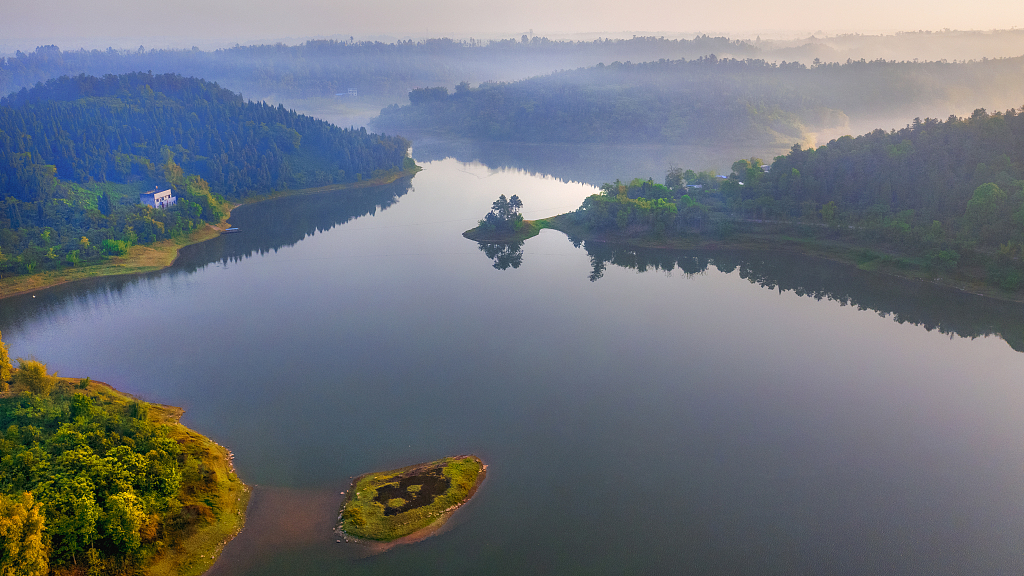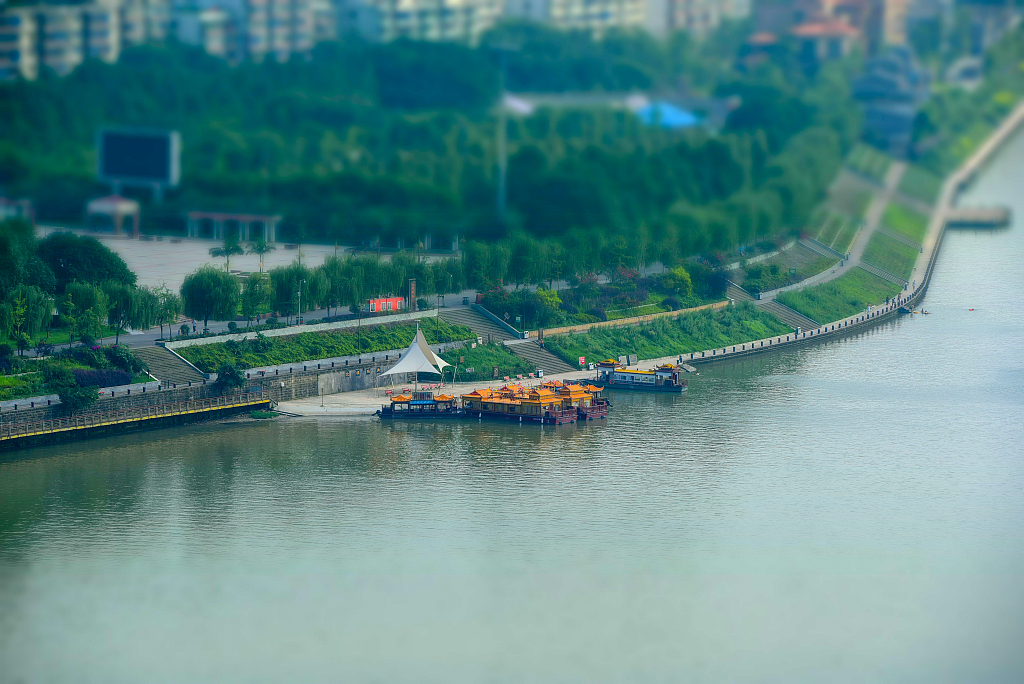Xiejiahe Wetland Park looks no different from any other waterfront green space, but upon closer inspection, visitors might be astonished to discover that the man-made stepped waterfall - the park's most photogenic spot - is a treated sewage outlet.
The treated sewage, discharged from Xiejiahe Water Reclamation Plant in Neijiang City, Sichuan Province, is filtered one final time through the wetland park before flowing into the Tuojiang River, a tributary of China's longest river, the Yangtze.
In order to overhaul the water quality of the once-heavily-polluted Tuojiang River, Neijiang embarked on a comprehensive revamp of water environment in Tuojiang River basin with an investment totaling 6.28 billion yuan ($874.8 million), building sewage treatment facilities, cleaning "black and odorous water bodies," and restoring ecological systems on the Tuojiang River shoreline.

Scenery of Neijiang City, Sichuan Province in southwest China. /CFP
Scenery of Neijiang City, Sichuan Province in southwest China. /CFP
The water reclamation plant, started operation on June 30, 2022, and is helping to further facilitate the transformation of the Tuojiang River. The river once was the most heavily polluted river in Sichuan Province and even across the upper reaches of the Yangtze River, as it passes through the most densely-populated and economically active areas in Sichuan.
Neijiang-native Jiang Min, with Sichuan Aqua Gathering Eco-environment Management, the operator of the revamp program, recalled the past, "When I was young, I was always astonished to find people swimming in the river, because it was unacceptable to me to swim in that dirty water, but now it is perfectly fine to swim here."
The Xiejiahe Water Reclamation Plant is situated downtown to facilitate the collection of residential sewage and was built underground to minimize disturbances to the surrounding neighborhood.
The entrance to the plant is a descending slope with a solar panel roof. Inside are numerous pools of varying sizes. When urban sewage is channeled to the plant, garbage and floating objects are first intercepted, and the rest proceeds through sedimentation, degradation of organic matter, removal of phosphides and nitrogen, decolorization, and disinfection.
The plant now boasts a treatment capacity of about 10,000 cubic meters per day and is expected to reach a daily capacity of 30,000 cubic meters in the future.

11 "black and odorous water" sites in Neijiang have all been cleaned up. /CFP
11 "black and odorous water" sites in Neijiang have all been cleaned up. /CFP
The recycled sewage replenishes the nearby Xiejiahe River, flushes toilets in public buildings, cleans city streets, and irrigates parks and greens, according to Wang Guiqiang, the general manager of the Sichuan Aqua Gathering Eco-environment Management.
The whole system is smart. In the plant control room, a huge screen displays the smart operation platform used to monitor sewage treatment facilities at different sites, and analyze real-time water quality.
Today, 11 "black and odorous water" sites in Neijiang have all been cleaned up, and 39 green corridors and wetland parks have been built. Across Sichuan Province, ecological buffer zones spanning over 1,400 km have been set up along rivers and lakes, and efforts have been made to restore the functions of aquatic ecological systems.
(Peng Yunjia, Xing Tuo and Li Like contributed to the story)
Source(s): Xinhua News Agency